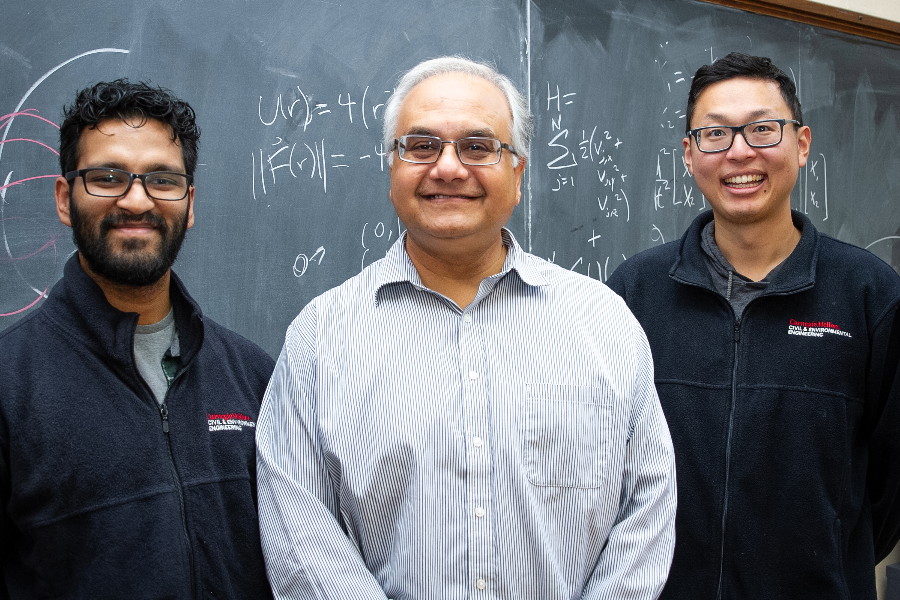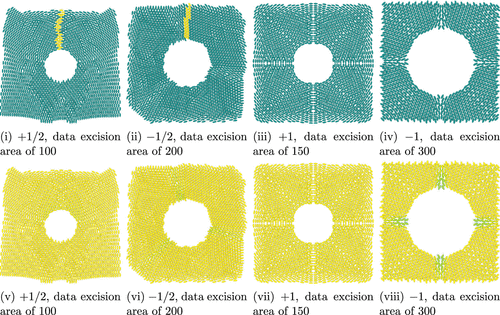
Liquid Crystals and the Hunt for Defects
Though the term may be unfamiliar, you’ve probably seen liquid crystals at work. From liquid crystal displays (LCDs) to the color-changing abilities of a chameleon, the structure of liquid crystals is responsible for many engineered and natural phenomena. Saptarshi Saha, a Ph.D student in the Department of Civil and Environmental Engineering (CEE), in collaboration with CEE faculty members Amit Acharya and Gerald Wang have made a significant contribution to the study of defects in these materials.
Liquid crystals share commonalities with both liquids and with crystalline solids. Under the right conditions, their molecules can orient along a plane to create one large pattern of alignment. But not every pattern is perfect: liquid crystals are prone to the formation of topological defects. Each defect is a zone of conflict, in which the directional orientation of one group of molecules is incompatible with that of its neighbors.
"It’s akin to learning about the presence of something in the middle of a room just by walking around the perimeter of the room."
Wang compares this to the pattern of a fingerprint. Look at your own thumb, and you’ll most likely find that at some point on your inner thumb, there’s a point where one pattern of ridges meets another. Identifying topological defects like these in liquid crystals can be difficult, but it’s key to unlocking their properties.
Old methods for finding topological defects required extensive information on the whole grouping of particles, measuring the directional order in the system, and using concentrations of disorder to estimate where a topological defect might be found. The team’s method, on the other hand, does not require extensive information about the area of the defect itself. Instead, their method searches for a topological signal that can be used to infer the location of the defect.
“It’s akin to learning about the presence of something in the middle of a room just by walking around the perimeter of the room, rather than investigating every little thing on the inside,” said Wang.
This is more efficient than prior methods and more accurate when faced with limited information on the system in question. The team has termed their algorithm TADA, for Topology Accommodating Direction Assignment. It works by assigning a directionality to each known molecule. Once assigned, it can follow any discontinuity between two alignments of molecules, tracking the topological defect to its source.
In a head-to-head comparison, TADA was able to identify defects more efficiently and with less data than pre-existing means. This could prove a crucial tool for materials scientists and engineers working to improve LCD technology. Liquid crystals are also being studied in biological systems, like in chameleon skin. Researchers across the world are exploring potential applications of liquid crystals in areas ranging from data storage to optical lenses. Whatever their area of inquiry, TADA can provide them with an invaluable tool.
This story was originally published by the College of Engineering
